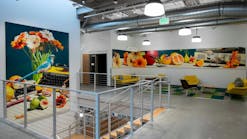The DOE recently released their study on Early Lessons Learned on the Way to Market. The study outlines some of the outcomes of LEDs in their earlier days as well as key lessons that have been learned in the early SSL market introduction. The study also strives to understand the key elements needed to pursue Solid State Lighting as the new promising technology. The study, which outlined 12 key lessons by the DOE, can be found on the DOE website.
I wanted to point out one of the concluding charts presented in the study that I found interesting:
Many manufacturers and now the DOE are trying to compare lighting, especially LED, to popular products such as smart phones. LED has truly changed the perception of lighting from just conventional technologies. LED lighting has far more electronics than incandescent, CFLs, halogens, and other technologies, but can we really start looking at LED as the new cool gadget to own? One of the ideas that I have seen thrown out there is that LED lighting systems could have the same concept as smartphones, where customers can upgrade to new lighting systems that offer more features than the previous version rather than wait for their lamps/luminaires to burn out. And with the constantly improving and changing world of LED technologies, this idea is not inconceivable from a technological perspective. But how realistic is this?
The high cost associated with testing LEDs is a big market barrier. Even with the option of “family solution” testing - where each product does not need to be individually tested if they belong to a similar product line – becomes problematic with the fast evolving LED technologies. The rapid evolution in LED technologies sometimes proves to be difficult to keep product lines consistent with one another. With the smart phone model of regularly updating ones LED lighting system, LED lighting systems will need to be tested more quickly, which could become costly in the long run.
Thus far, LED has been marketed as the lighting solution to replace conventional technologies that are not as energy efficient. There are currently no infrastructure or regulations that outline a path where LED can break out of this mold. For instance, LED replacement lamps still need to be designed with Edison based sockets. LED is replacing more than a 100 year old technology, so it is a little difficult to envision LED offering something outside of providing illumination. LEDs are very different from smartphones in this regard. Smartphones weren’t confined by existing infrastructure, so there was huge room for innovation. Also, is it fair to compare adoption rate of smartphones with LED lighting? How much do people really care about the perfect lighting in their living room or office versus being able to update their social network while on the train?
Also, to realize the full energy potential of LED lighting, the socket that LED lighting will occupy will preferably need to be unchanged for the next 8 to 10 years. LED lighting systems which will be upgraded every year or so won’t utilize the long life span of the LED technology and could create greater cost and add waste to the environment.
Can we really compare LED lighting with smartphones? Don’t get me wrong, there are quite interesting products in the market right now, one of them being the Philips Hue. These products are trying to introduce new features that weren’t available before LED technology. However, will marketing them as the cool new thing resonate with customers, or will people forget about the App to change your lighting color setting soon after they go into the socket? Will the LED market be able to explore new avenues and opportunities where it can become the new smart phone that a customer craves and can’t get enough of, or will it be forever constrained by the socket?
Shonika Vijay | Analyst
B.S. in Engineering from the University of California Davis
Shonika Vijay is the analyst for the outdoor and replacement LED market at Strategies Unlimited. She was a consultant in energy efficiency with ADM Associates and DNV KEMA. She conducted evaluation, measurement and verification for utility and state sponsored energy efficiency programs and studies. She completed her Bachelors in Engineering from University of Davis, California






